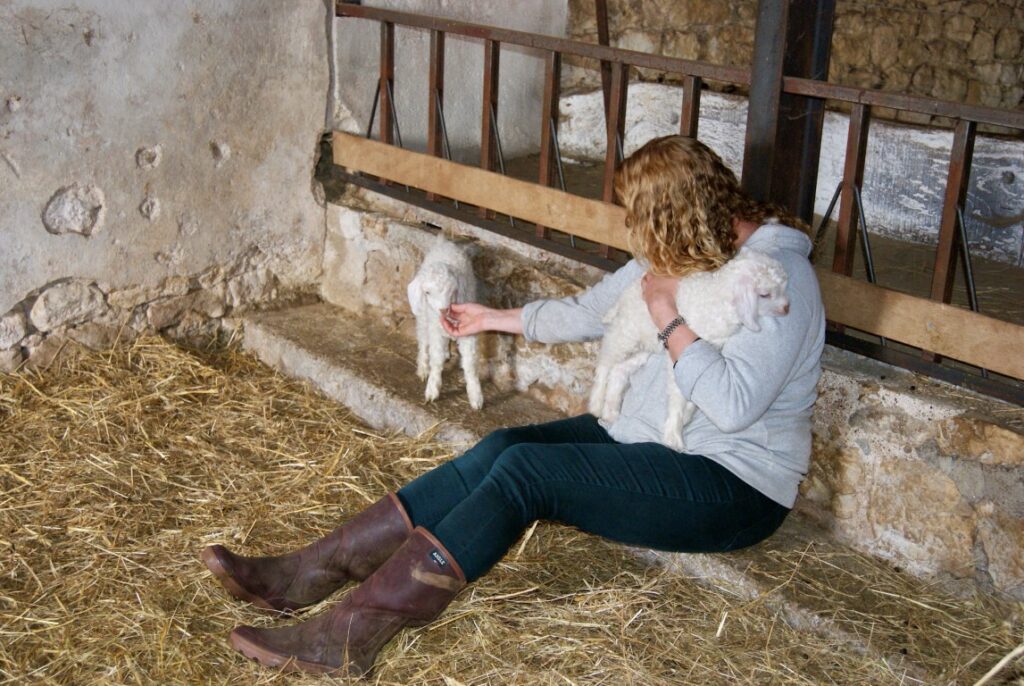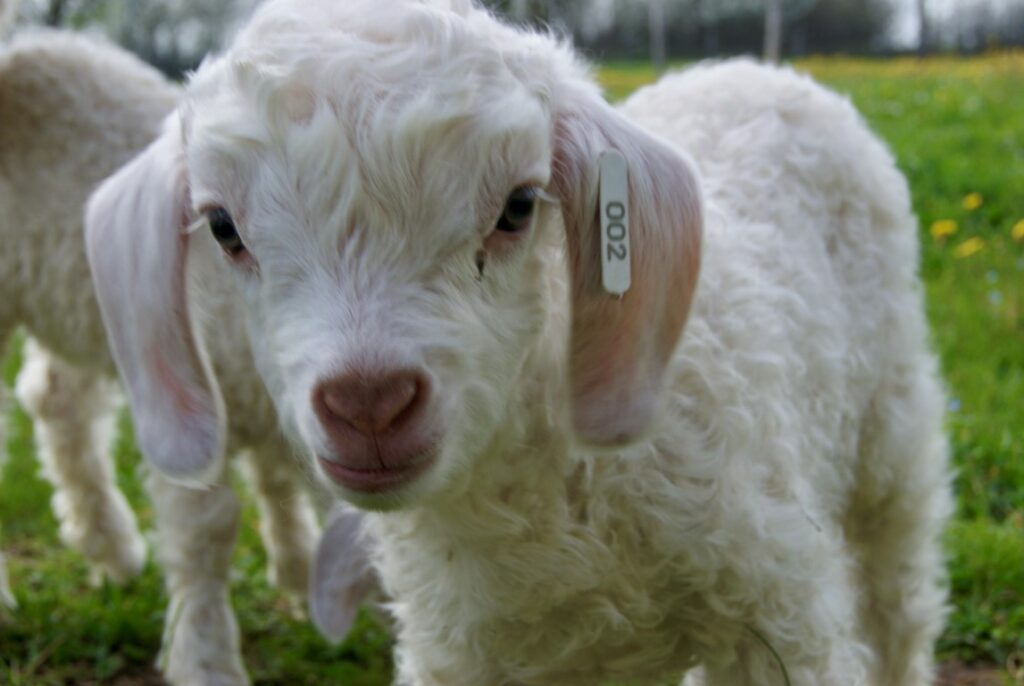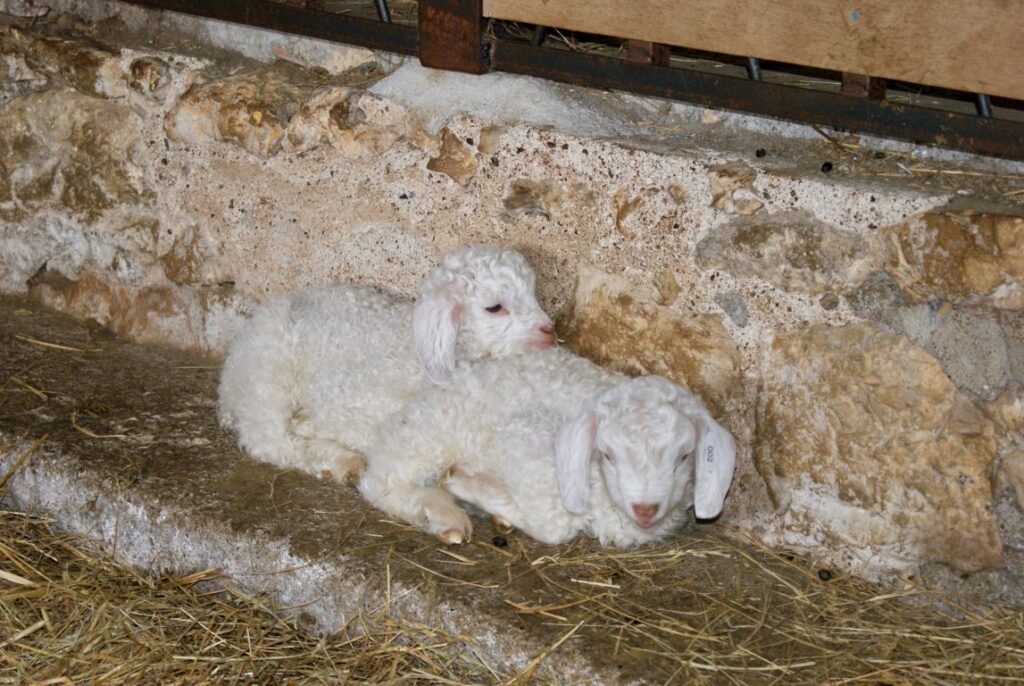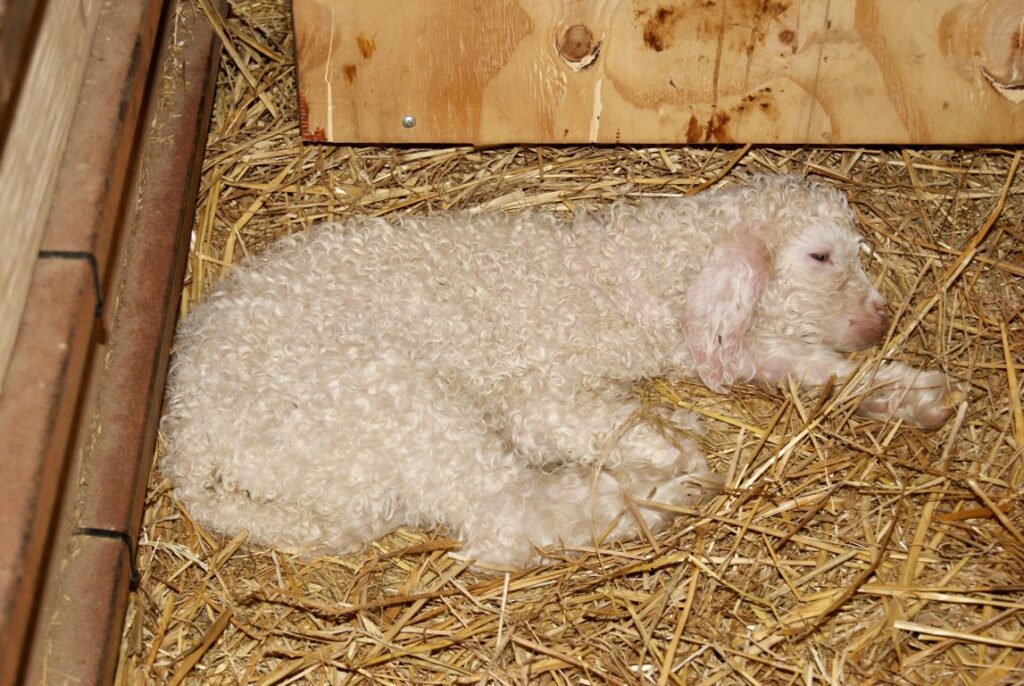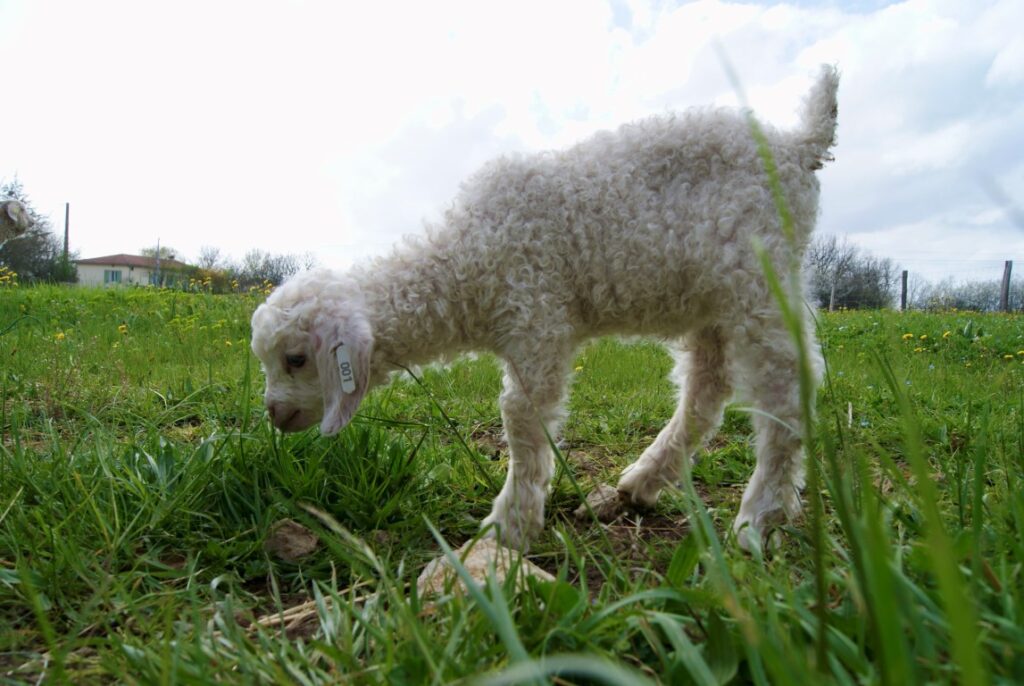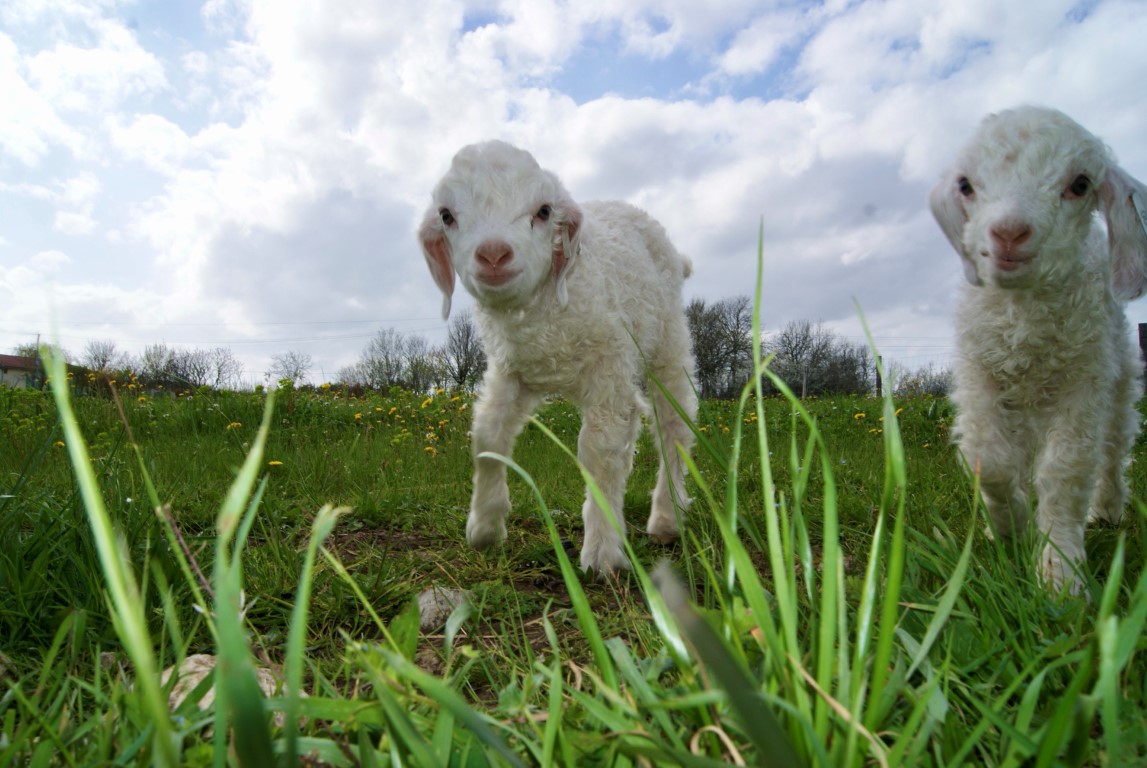
All About Angoras
What Makes Angora Goats so Special?
Clearly we are biased, but Angora goats really are a beautiful and unique breed. For instance, did you know that Angoras are the only breed of goat that produces hair – mohair – and not wool? Angora goats are smaller than other commercially raised breeds. In addition to producing wonderful soft mohair, they are also known for their sweet, inquisitive natures.
Mohair is renowned for its natural curl, fineness, softness and silky lustre. Although the colour is generally pure white, Angora goats can be found in darker colours such as black, brown or grey.
The Angora goat is an ancient breed whose origins are widely debated. However, the modern Angora goat comes from the Ankara region in Turkey where they can be traced back to the 11th century. Now they are now found in many countries around the world, with South Africa and the USA being the largest producers of mohair.
Shearing time
The hair on Angoras can grow about 2.5cms (1 inch) per month, producing up to 25% of their body weight in fleece and they are shorn twice a year. Shearing time on the farm is a busy and tiring time. Although we don’t currently do most of the shearing ourselves, there are plenty of other tasks to do. This includes lots and LOTS of brushing to remove brambles and other vegetation that gets caught up in their fleeces. We also make sure everyone – goats and humans! – are fed and watered during the day. Humans must also be fed and ‘wined’ post-shearing.
Our professional shearer, Francis, has been in the business for many years. He spent 10 years shearing sheep before moving to goats and he is used by many Angora owners, all across France. As he doesn’t always have time to shear all our herd, we get Francis to start with the kids. If there are any pregnant females at that time he shears them too.
Sheep are a lot easier to shear than goats!
Over the past three years Mario has been learning to shear, because as our herd grows, Francis won’t have time to do them all. It’s unlikely Mario could beat Francis’ records for shearing – 400 sheep in one day and 70 goats in a day – but I don’t think he’d want to try either. After shearing day, when Francis has done his bit, we set aside a few mornings when Mario shears the remaining goats.
Just to give you an idea about how shearing goats is done, you might want to watch this short video. It was recorded by our photographer friend during the August 2022 shearing.
Some of the goats are noisy and complain constantly, while others take the opportunity to have a little nap. Rest assured, no one is hurt and straight after shearing they get a few goat treats and go skipping off happily.
As you can see in the video, both male and female Angoras have horns. The females’ horns are relatively short and curl back from their foreheads, whereas the horns of the bucks curl back and then sweep outwards. They continue to grow throughout the buck’s life. Older bucks have quite magnificent, long, spiralled horns. Luckily for us – and the shearer! – our Maousse, le père de famille, is not aggressive and is pretty laid-back when shearing time comes around.
What happens After Shearing?
We currently sell raw fleeces and also have been working with spinning mills (filatures) to transforming some fleeces into yarn. Once the fleeces arrive at the filatures, they are washed, dried, carded and spun into yarn. There are surprisingly few filatures close to us and they are incredibly busy, meaning that this yarn won’t be available for collection for at least 12 months. Therefore we have been running trials with filatures in other countries within Western Europe.
Any Other Interesting activities?
We follow a three-month rotational grazing cycle, which means we leave the goats in one place for a few days before moving them to another pasture and they don’t return to a pasture for at least three months. Some farmers, whose animals are kept indoors, or who don’t rotate the grazing lands, have to routinely worm their herds, but because we are an organic farm, we only worm our goats if the parasite loads are above a certain level, which is rare. To check the parasite level we have to have the goat poo analysed in a laboratory.
Yes, you guessed it, we regularly have the unenviable task of collecting samples of goat poo. Off we go with numbered bags and rubber gloves, picking up poo from the stables the goats use at night. One bag for each of the stables. The carefully sealed bags are sent off to the lab and the results come back within a few days.
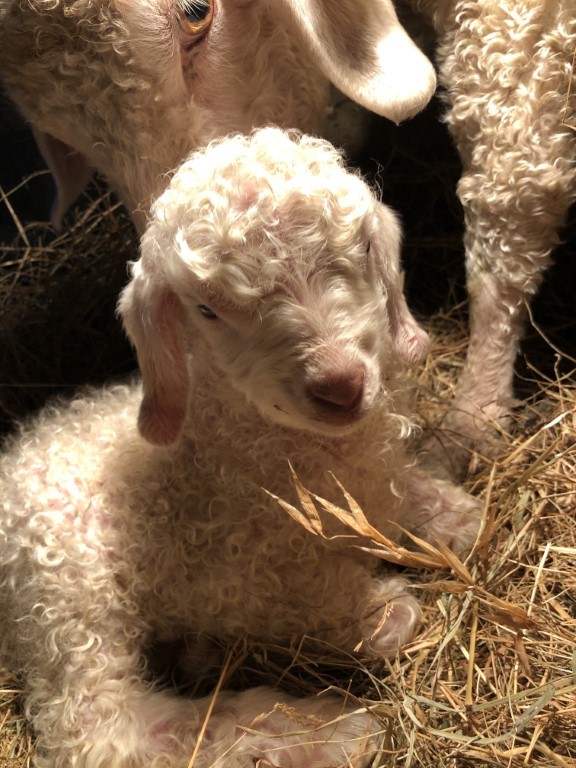
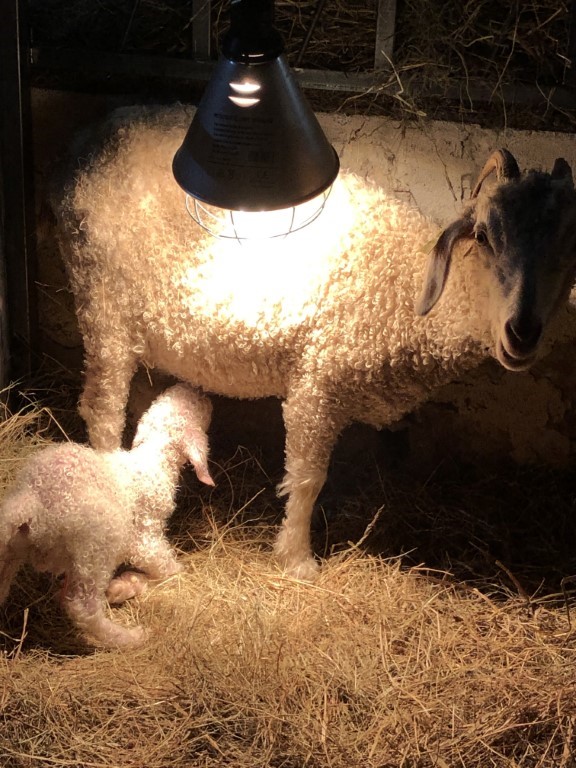
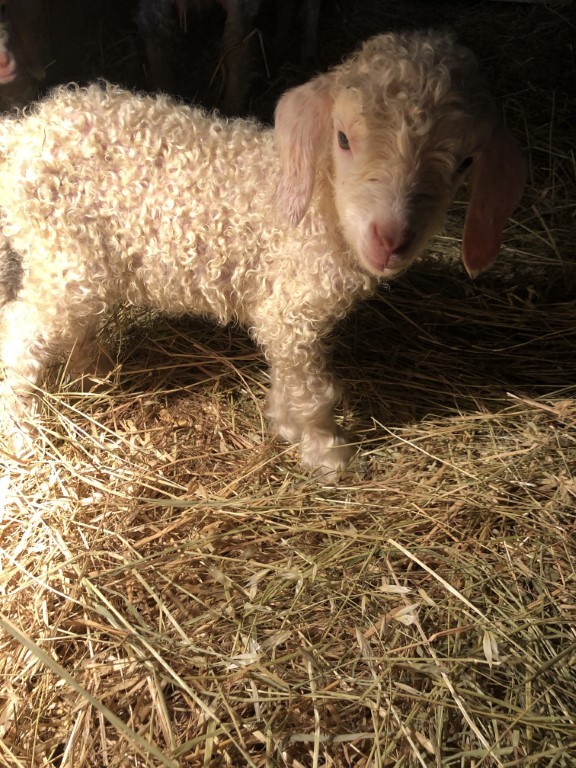
From the Beginning
As soon as we had the property we contacted a renowned breeder of Angora goats in Brittany, France and arranged to collect a herd of ten castrated males. The breeder recommended starting with them, because they tend to be calmer and easier to look after for beginners.
Our boys, Ninou, Nibizo, Okapi, Olivier, Oranger, Onyx, Oridé, Pablo, Paulo and Phénomène, arrived in May 2020. They took their role as testers of the farm’s goat-defence installations very seriously, and as a result we had to make several emergency dashes to the local hardware stores.
After a few months, we contacted the breeder again and agreed we were ready for the next stage. This time we were getting the females and a buck. All the girls (Laridée, Lumière, Milady, Nouvelle, Oasis, Orbitale, Paprika, Perle, Pénombre, Princesse and Paquerette) and the buck, Maousse, arrived in August 2020.
Naming all the kids
Our first seven kids were born in March 2021 and we then had the fun task of naming them. We decided to follow many of the breeders who already use a letter per year and 2021 was S. Aside from the letter S, we tried to find names that were relevant, where possible, to the mothers’ names. So we welcomed into our flock Stanley (born to Nouvelle), Silène (Paquerette), Sultan (Princesse), Stella (Orbitale), Sunny, (Lumière), Savannah (Oasis) and Smokey (Pénombre).
As the females only had single babies in 2021, we decided to breed all of the girls in 2022. So imagine our surprise when nineteen baby goats arrived! There were eight sets of twins – five pairs of twins were born on the same day and with four sets arriving before 10am, it was quite a day. However, that was the easy part, because then we had to come up with nineteen names beginning with T.
Play time
Babies and Mums in 2022 :
- Turbo and Thandi – born to Nouvelle,
- Tinkerbelle and TinTin – Paprika,
- Tyl – Orbitale,
- Tiaré and Tahiti – Perle,
- Teddy – Lumière,
- Titan and Toto – Paquerette,
- Theo and Tineke – Milady,
- Taouf and Taliah – Oasis,
- Tiash and Tia – Pénombre,
- Tallulah and Tulipe – Laridée,
- Tiana – Princesse.
Babies and Mums in 2023 :
Given how many kids arrived last year (2022) Maousse only romanced seven of the girls in the autumn. (Nouvelle, Paprika, Orbitale, Perle, Paquerette Pénombre and Laridée).
- Una and Uma – Orbitale,
- Unika – Paprika,
- Urs and Ursula – Paquerette,
- Ulyssia and Ulysses – Nouvelle.
- Ulliana – Perle,
- Ubie and Ulfie – Laridée,
- Umberto – Pénombre.
Paprika was enormous during her pregnancy so we were convinced she’d be having twins, but just delivered one, hence we decided to call her Unika. However, given that Unika is the biggest baby born on the farm we’ve been calling her Maxie.
Nouvelle’s twins were the 6th and 7th born and their baby ear tags are 006 and 007. I’m sure you can guess where this is going….. Ulysses is his official name but yes, we call him James.
Our Products
At the moment we have some raw mohair available, fleeces that have been cleaned by hand of vegetable material, but not washed nor transformed in any way. We are working with various companies in order to transform our mohair into yarn and into finished items. We currently have a batch of superkid which has been spun with bamboo into a very fine yarn. We are planning to use this to make items and are running some trials to see what items we would like to produce.
March 2024 – It’s Kidding Season!
Kidding season is an exciting time for most goat farmers, but it can also be quite stressful – especially for the animals. The babies are due about 23rd March but we do think they will arrive earlier. Of course we’ll update everyone as soon as the kids arrive, meantime, here are some of last year’s babies – Uma, Una and Unika (Maxie).
